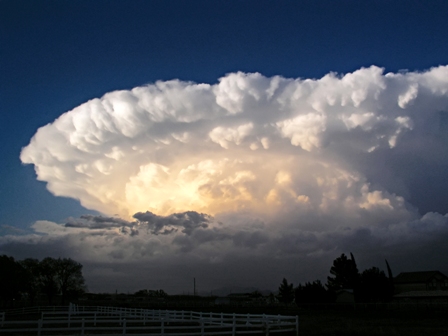Want to Be More Negative?
Psalm 5:11
“But let all those that put their trust in thee rejoice: let them ever shout for joy, because thou defendest them: let them also that love thy name be joyful in thee.”
If you haven’t been feeling cheerful lately, maybe you should have more “negativity” in your life.
It is said that there is an increase in accidents, murders, suicides and fights when the Santa Ana winds sweep into southern California. Canadians say that the Chinook winds produce the same effects. Wherever these winds blow, those who experience them tell the same tales. Scientists 
The study of the effects of positive and negative ions on people got off to a poor start at the beginning of the eighteen hundreds. However, more scientific studies conducted in the 1980s suggest that about 30 percent of the population are sensitive to negative or positive ions. When there are a lot of negative ions, people report feeling better, and they have better reaction times. Positive ions increase complaints about irritability and headaches. Reaction times are also increased. If you have ever felt extra alert and perhaps even a bit euphoric as a thunderstorm approached, you were probably reacting to negative ions. Waterfalls and beaches are also natural generators of negative ions. One of the best negative ion generators you can have in your home is an aquarium.
It’s good to know, though, that however our environment makes us feel, we can always have joy because of God’s love for us in our Savior, Jesus Christ.
Prayer:
Dear Father in heaven, I confess that sometimes I allow the world around me to take from me the joy that should always be mine because of Your love for me in Christ. I commend all of my concerns into Your hands and praise You in joy. Amen.
Notes:
Linda Garmon. 1981. “Something in the Air.” Science News, Vol. 120. Dec. 5, pp. 364-365.